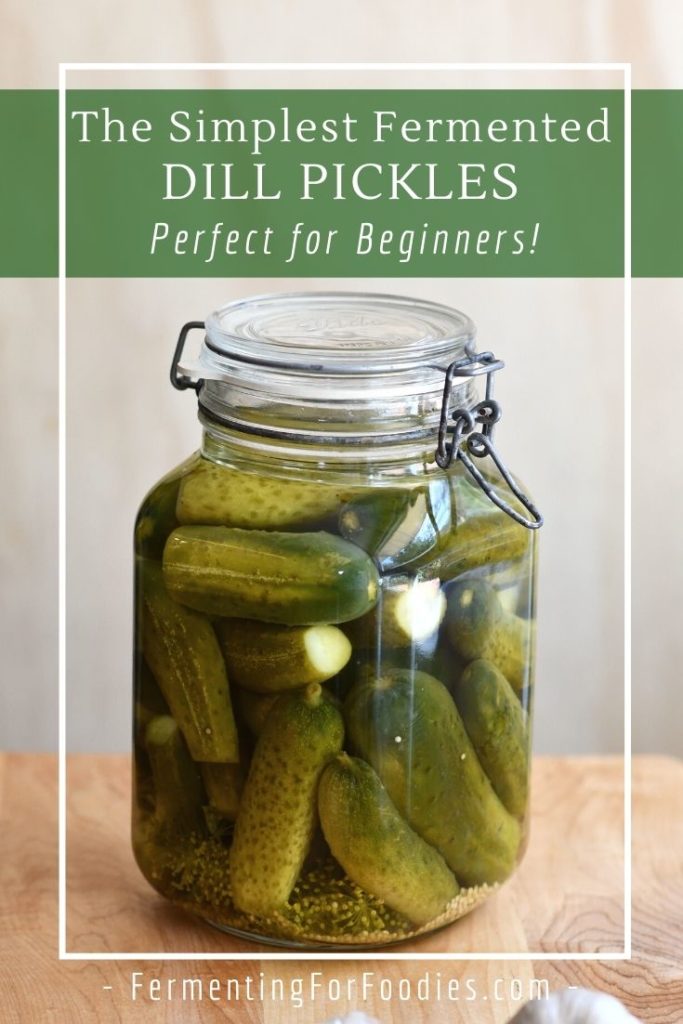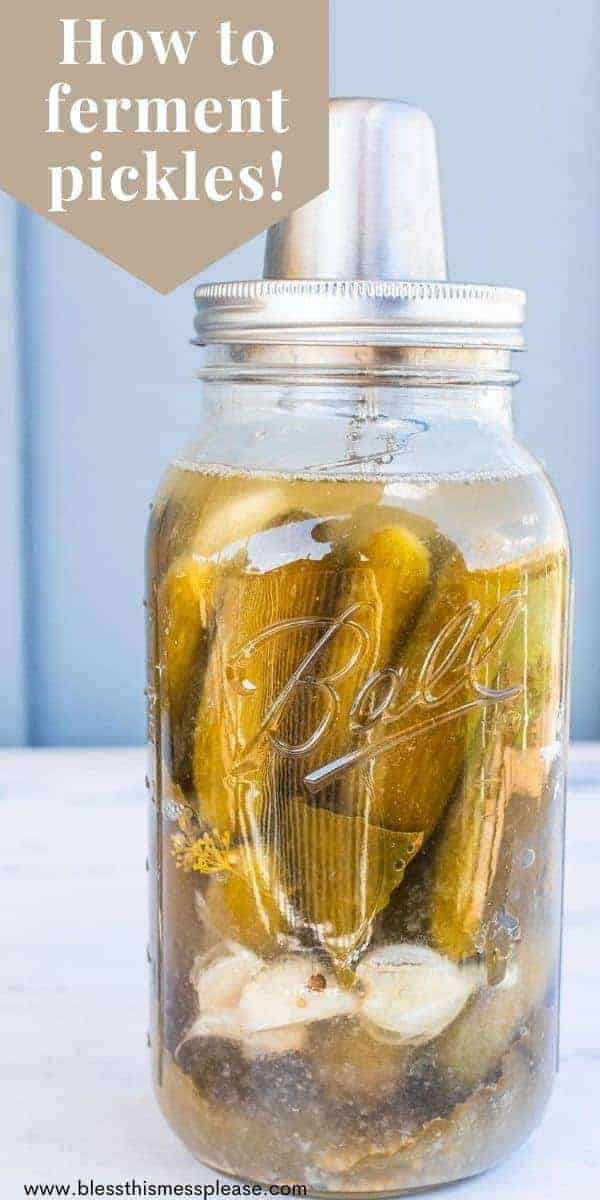Homemade Fermented Cucumber Dill Pickles
by Admin
Posted on 29-09-2023 04:04 PM

I absolutely love fermented cucumber pickles, they were probably what initially got me into fermenting, to begin with. I’ve been a pickle lover ever since i was a kid, and love all varieties, including canned vinegar pickles , refrigerator bread and butter pickles , and dill pickles.
 The main difference is that fermented pickles use saltwater brine and
time
to ferment, while other varieties are soaked and pickled in a vinegar solution and canned to be shelf stable. My mom makes awesome sweet bread and butter pickles , and her dill pickles are to die for, but there is something to be said for traditionally fermented cucumber pickles.
The main difference is that fermented pickles use saltwater brine and
time
to ferment, while other varieties are soaked and pickled in a vinegar solution and canned to be shelf stable. My mom makes awesome sweet bread and butter pickles , and her dill pickles are to die for, but there is something to be said for traditionally fermented cucumber pickles.
Step 1: wash the cucumbers, slice off 1/16 inch of the blossom end, and soak them in an ice bath for 15-30 minutes to firm and crisp them up. There are enzymes in the blossom end that can make your pickles soft, so be sure to remove them. Step 2: gather your fresh garlic and dill, and pickling spices. Because these fermented pickles are left whole, you want the brine to be extra flavorful. I add a lot of garlic… 10-15 cloves, sometimes 20! fermented garlic is really good for the gut too! step 3: layer the spices, cucumbers, garlic, dill and bay leaves and more cucumbers in a large two-quart jar (half-gallon).
Last updated on september 21, 2023 let’s make a delicious gut-healthy snack with this easy fermented pickles recipe! making lacto-fermented pickles is a great way to preserve cucumbers from the summer garden (or farmer’s market) to enjoy all year long. If you’ve never fermented anything before, don’t be intimidated. I’ll show you exactly how to make crunchy naturally fermented dill cucumber pickles with this easy step-by-step tutorial – with no heat, no vinegar, no canning… just a simple salt water brine. I love eating fermented pickles with sandwiches, veggie burgers, a cheese board, or just as a tasty snack. If you’re looking for more ways to use or preserve fresh cucumbers, check out our classic vinegar refrigerator pickles recipe or our easy garden tzatziki sauce recipe.
Welcome to our comprehensive guide on how to make the most delicious and flavorful lacto-fermented pickles with garlic and dill. If you're a pickle enthusiast like us, get ready to embark on a journey to pickle perfection. In this guide, we'll provide you with an easy step-by-step recipe to create lacto-fermented pickles that are tangy, crunchy, and packed with healthy probiotics. Not only are these pickles a treat for your taste buds, but they also offer numerous health benefits. So, roll up your sleeves, and let's dive into the world of homemade fermented pickles!.
What’s the Difference Between Fermented Pickles and Regular Pickles?
Eating fermented pickles is one way to incorporate more fermented foods into your regular diet pattern. While shelf-stable vinegar pickles are easy to find, fermented pickles are a little harder to locate. Here are 5 brands to look for:
bubbies
bubbies pickles are probably the most well-known brand of fermented pickles. They have been around for 30 years. Bubbies pickles are a family-owned business, and they make their pickles in small batches to ensure the best quality.
 They are also gluten-free and gmo-free. Bubbies pickles are made using a traditional fermentation process that takes several weeks to complete. During the fermentation process, lactobacillus bacteria convert the natural sugars in cucumbers into lactic acid.
They are also gluten-free and gmo-free. Bubbies pickles are made using a traditional fermentation process that takes several weeks to complete. During the fermentation process, lactobacillus bacteria convert the natural sugars in cucumbers into lactic acid.
While there is certainly enough room in my heart for both fermented pickles and my beloved great-grandmother's mustard pickle recipe , fermented pickles have not been heated and the naturally occurring enzymes and beneficial vitamins are still fully present (even heightened!). When you water bath can pickles in a vinegar brine, you're essentially killing all organisms that may cause the pickles to spoil when stored at room temperature. Even refrigerator pickles are different than fermented pickles. The difference here is you still pour a hot vinegar-based brine over the pickles, but instead of water bath canning them, they're placed in the refrigerator.